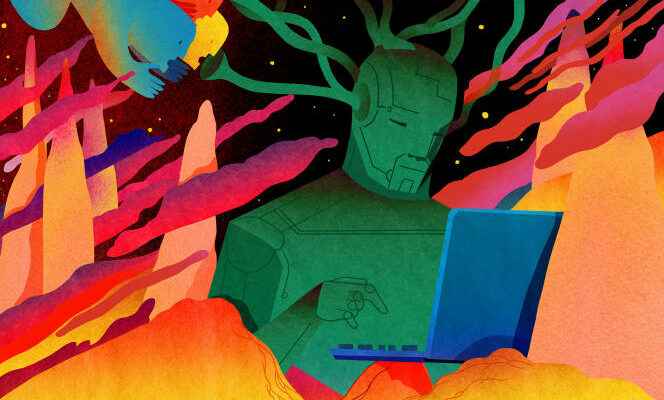Since November 30, an online conversational agent, or chatbot, has fascinated Internet users with his literary creations, his mastery of human or computer languages, his surprising or disappointing answers, sometimes his gross errors. We no longer count the songs, the question-and-answer games, the dialogues, even the interviews of ChatGPTthe program of the American company OpenAI, specialized in artificial intelligence (AI). “The cat and the robot were playing poker, but the cat cheated by using its claws to mark the cards”for example, offers the tool when asked for a funny phrase.
“As a user, I may be impressed, but as a scientist, we have to see, because we don’t have the details of this chatbot yet. The results need to be evaluated by metrics and tests that the scientific community has developed”notes Chloé Clavel, professor at Télécom Paris, who warns that “too much confidence in the form can lower the vigilance on the veracity of what is produced”.
“We are still seeing a shift. ChatGPT, although generalist, seems to be better at specific tasks than systems programmed for that purpose”believes Benoît Sagot, of the National Institute for Research in Digital Sciences and Technologies, for whom however “the most interesting thing is to discover what he can do unexpectedly”.
Ideal combination
What are the secrets of this AI? “A priori, there were no new methods invented for ChatGPT. But it mixes previous approaches with a lot of data”believes Chloé Clavel, for whom one thing is certain: “The major role of humans in development. »
Lifting the hood of ChatGPT therefore amounts to unearthing the human part of this multi-stage rocket. First stage, the language model or the art of being able to make a machine write a language correctly. This stage dates back, for OpenAI, to 2020, the release date of GPT-3, the largest program ever built at the time with some 175 billion parameters. It is as if, to adjust the sight of a misadjusted rifle, the specialist had to find the ideal combination by activating 175 billion buttons. Here, the objective was to find the best word to complete a sentence. To train, the software ingested more than 570 gigabytes of data from the Web. These parameters are organized according to an architecture imagined by Google in 2017, called “Transformer”, to better take into account the context and therefore improve the translation.
You have 66.33% of this article left to read. The following is for subscribers only.
